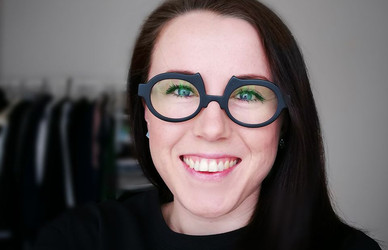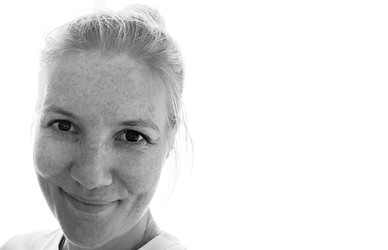Male banter and motor oil
Gender quotas and diversity are hot topics in the current debate. More women on boards, in management and anywhere that lacks gender equality. Design School Kolding acknowledges the problem but here the situation is reversed. Only 25 per cent of the students are boys. And we need to address this.
“A fifty-fifty distribution in all our study programmes would be ideal,” says Peter Barker, Head of Education at Design School Kolding. In Industrial Design, which is also Peter Barker’s domain, the distribution is actually quite balanced. However, in Communication Design, Fashion and Textile Design, and Accessory Design the girls rule. Even though all students are tremendously talented, the unbalanced gender distribution is a bit of a shame, according to Peter Barker:
”When we have mixed classes everything runs smoothly. Perhaps I’m generalising here, but the female brain and the male brain seem to work in different ways when it comes to the purpose and potential of design. When both genders are represented, it has a positive effect on the collaboration.”
Pure Top Gear
The reason for the unbalanced gender distribution is not immediately clear. The school accepts students based on talent, specifically ‘potential, passion and determination’. Character traits that are not linked to gender. And claiming that there should be something particularly ‘girly’ about the teaching does not hold water. The school allows every type of personality to grow and unfold, Peter Barker emphasises:
”For instance we did a regular Top Gear thing where three bachelor students from Industrial Design were asked to design a carbon fibre body for a new, small sports car similar to the British Lotus Elise. The project involved sketching, computer drawing and finally building the model on a 1:4 scale. An expert from Coventry University in England contributed with input and the result turned out great. Three boys got together on solving this challenge, which was highly complex in terms of design – and they did a fabulous job,” Peter Barker says.
Work for NASA
Oh and by the way, we work with NASA too, Peter Barker adds. A collaboration that was set up with the help of an external consultant with good contacts in Houston:
”It will take 220 days to fly to Mars and at least the same amount of time to get back. So NASA was looking for ideas for how to design the interior of the small space capsule to make the journey as pleasant as possible for the astronauts. A team of three Master students dedicated themselves completely to the job. One of the things they did was lock themselves in a small flat for 40 hours bringing the same equipment that you would on a space journey. They documented the process by setting up a camera to take a picture every minute. They played rocket noise for the whole 40 hours, and except for the issue of gravity, the set-up was really very realistic. This type of insight and identification produced some quite exceptional projects. Company collaborations are always a good thing but being selected for this one, I have to say, was quite an honour,” Peter Barker ends.
Fungi and vests and…
In the school’s additional study programmes students are also doing projects that bring design into play far beyond your usual stereotypes. Students in the Fashion and Textile Design programme recently set up a laboratory to grow plant fibres and mycelium fungi to create a whole new, flexible material. In the Accessory Design programme students are busy doing wearable technology projects, for instance a high-technology, sensory sleeping vest that helps e.g. soldiers sleep at night when they are far away from their partner.
The school fosters the ability to investigate and register, process and develop form, function, materials and media. So, boys, see past the stereotypes and check out the new, open admission process for the BA programme before the application deadline on 15 March. Application deadline for the MA programme is 1 May.
Open House
On Thursday 31 January, Design School Kolding will be hosting its annual Open House event. You will meet students and teachers and learn more about the open admission process for the BA programme (please note language requirements). The school is open from 10 am - 6 pm. We are located at Aagade 10 in Kolding.




